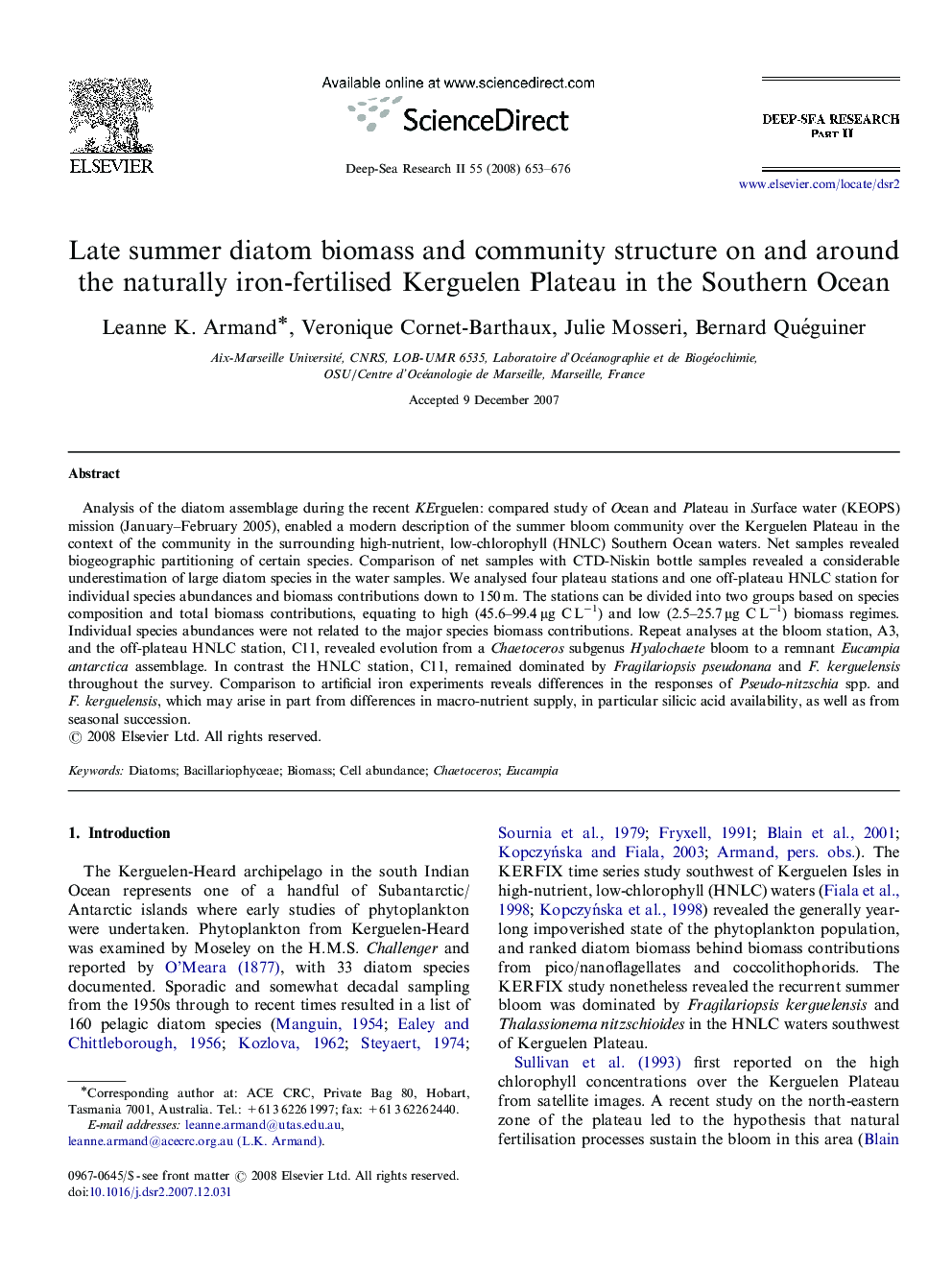| Article ID | Journal | Published Year | Pages | File Type |
|---|---|---|---|---|
| 4537510 | Deep Sea Research Part II: Topical Studies in Oceanography | 2008 | 24 Pages |
Analysis of the diatom assemblage during the recent KErguelen: compared study of Ocean and Plateau in Surface water (KEOPS) mission (January–February 2005), enabled a modern description of the summer bloom community over the Kerguelen Plateau in the context of the community in the surrounding high-nutrient, low-chlorophyll (HNLC) Southern Ocean waters. Net samples revealed biogeographic partitioning of certain species. Comparison of net samples with CTD-Niskin bottle samples revealed a considerable underestimation of large diatom species in the water samples. We analysed four plateau stations and one off-plateau HNLC station for individual species abundances and biomass contributions down to 150 m. The stations can be divided into two groups based on species composition and total biomass contributions, equating to high (45.6–99.4 μg C L−1) and low (2.5–25.7 μg C L−1) biomass regimes. Individual species abundances were not related to the major species biomass contributions. Repeat analyses at the bloom station, A3, and the off-plateau HNLC station, C11, revealed evolution from a Chaetoceros subgenus Hyalochaete bloom to a remnant Eucampia antarctica assemblage. In contrast the HNLC station, C11, remained dominated by Fragilariopsis pseudonana and F. kerguelensis throughout the survey. Comparison to artificial iron experiments reveals differences in the responses of Pseudo-nitzschia spp. and F. kerguelensis, which may arise in part from differences in macro-nutrient supply, in particular silicic acid availability, as well as from seasonal succession.
